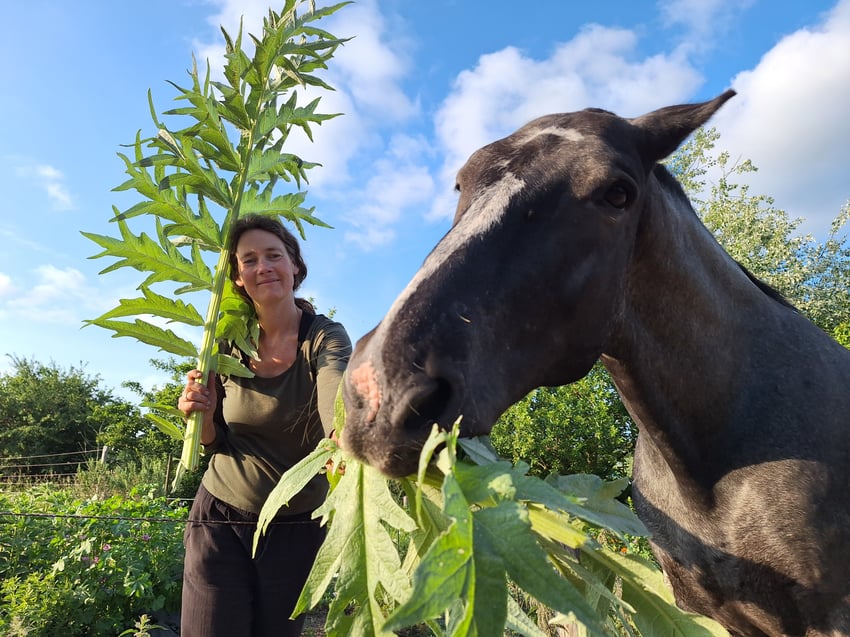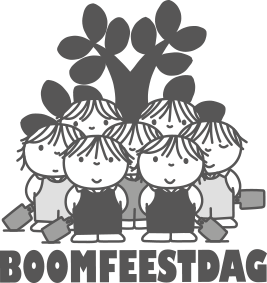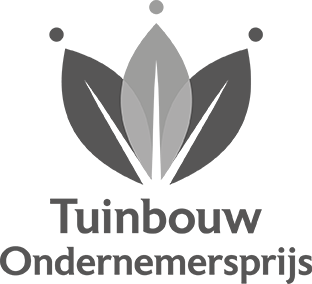Trees to browse – from horse pasture to tree-filled oasis

At a time when there is increasing focus on biodiversity, pure food and landscape quality, horse owners are also increasingly looking for a more natural living environment. No bare grasslands, but multifunctional pastures with structure, variety and edible vegetation. This calls for horse planting: a thoughtful use of trees and shrubs that enrich both the landscape and the well-being of the horse. Plant expert, nurserywoman and horse lover Sietske Metz, founder of Horse & Plant, shows how the right trees for horses not only create more biodiversity, but also have a positive influence on the behaviour and health of horses.

The horse's natural environment
‘Horses are originally forest animals,’ explains Sietske. ‘They graze, but they also nibble (browse) on twigs, leaves, buds and bark.’ As flight animals, they eventually migrated to more open landscapes, such as steppes. However, the need for variety in their diet and environment is embedded into their genes. Approximately 20% of their natural diet consists of fibre-rich “nibbling material”. On bare pastures, they cannot engage in this behaviour, which can lead to boredom, health problems and behavioural abnormalities.
Many horse pastures are overgrazed, with little structure or shelter, and the grass is often too nutrient-rich. ‘People think: he's outside, so the horse is happy,’ says Sietske. ‘You have to offer horses a dynamic environment, a mini-ecosystem full of edible plants, variety and stimuli, where they can exhibit their natural behaviour of roaming and grazing.” Her motto: Give the horse back its nature.
How plants improve the well-being of horses
Her search for plants that were good for her own horses began with: “Be careful, that's poisonous!”. This applies, for example, to maple trees and specifically maple seedlings among the grass. Horses find it difficult to distinguish between them. But besides everything that is not good, there are also many plants that are good.
Other studies, such as ‘Paddock paradise’ by American Jaime Jackson on the natural behaviour and movement of horses, are also a great source of inspiration for the design of the horse's living environment. Adding trees and shrubs not only creates a more attractive landscape, but also a living environment for horses in which they can keep themselves healthy and fit in a natural way. Browsing contributes to physical well-being through a form of passive physiotherapy, or “passive physio®”. Because horses have to stretch to reach the top of a shrub or tree, they stretch their necks and activate deeper muscle groups. Foals often have to stand in a V-position while grazing due to their long legs. If they also have to reach for greater heights, they stretch and have to balance better, which makes them stand more squarely and trains their core and their sense of balance. Thorns from hawthorn, for example, do not bother a horse, and it simply eats them, but even those thorns train muscle groups in the nose and mouth.

Design principles for browse planting
Sietske's experience as a nurserywoman and horse owner resulted in a well-considered approach: observing what horses eat and translating this to other possible species. Her advice to horse lovers:
- Use the 80/20 ratio: 80% grazable vegetation, 20% browsing material.
Work with native species such as elm, lime, hornbeam and willow. These fit well into landscape environments, grow quickly so it doesn't matter if something is nibbled, and contribute to biodiversity. - Position trees and hedges functionally: protected by fencing, so that the trees can grow first and the horses can then eat leaves, twigs and buds without causing damage to the trunk or roots.
- Learn about the phytotherapy of plants and see what your horse likes: for example, the elm is popular all year round and this plant has anti-parasitic properties. The ash helps against stress and is therefore planted for nervous horses. The lime tree is particularly good for the intestines, and the soft leaves of the hazel are good for the lungs and respiratory tract and may therefore be popular with horses that have a cough.
- Exotic plants can also be valuable additions. Relatives of the elm, such as Zelkova
or the nettle tree (Celtis), are very useful and have high ornamental value. Various types of lime trees, with their extended flowering period, can also provide a longer period of nectar for insects in the area.

Pruning management and utilisation of tree material
Trees provide nutritious material for horses all year round. It is important to understand the eating habits of horses: horses that are mentally and physically balanced often instinctively know what they need. Horses that are out of balance, as a result of years of poor nutrition and, for example, a lifestyle disease, can make poor choices. Because many horses have not grown up in a natural environment and have not been able to learn from their mothers and peers which plants are safe, horse owners consciously choose a safe and edible range of plants.
Hawthorn, for example, is only eaten in the spring. Espalier trees can also be pruned in phases so that they can be fed over a longer period of time. A step that goes a little further is branch hay – dried branches with leaves – which can serve as a winter snack pack and occupational therapy. In the Middle Ages, it was very common to feed animals with this. Centuries-old knowledge that is now relevant again.

A richer landscape for horses, people and nature
Horse & Plant's mission is clear: to make horse husbandry greener with well-considered, edible horse planting. A healthier environment for the horse, a richer landscape for people and nature.
‘If we all bring a little more nature back into horse husbandry, we will make the landscape more beautiful – and the horse's life richer,’ says Sietske.












